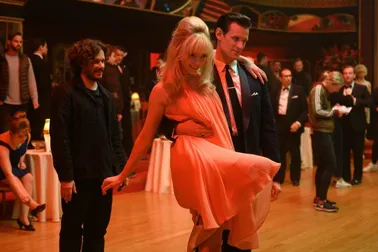"Branded to Kill"
- Adam Carr

- Jun 15, 2023
- 3 min read
The "Branded to Kill" poster artwork has followed me around for at least a decade. I've heard the merits as to why it was on the Criterion label and considered one of the greatest films of all time. But for some reason "the mood" never settled over me to watch it. My prejudiced first impression, whatever that was considering I've never watched a single frame or even seen a trailer for it, was that to watch it would be some heavy lifting. And then the mood caught me and I watched it. And what an experience!

It was a moment of extasy that comes with watching a great cinematic achievement for the first time. There is no time to think or analyze. The images capture you. The music carries you. The characters fascinate, scare, frustrate and amuse you. The senses explode into full arousal. Seijun Suzuki's "Branded to Kill" has jumped onto my top ten list of greatest foreign language film. I'm not sure what it knocked off that list but finding out it might be a Kurasawa, Fellini or Bergman wouldn't surprise me.

What adds on to the pleasure of this film is learning about its director Mr. Suzuki in an extra on the Criterion Channel. Mr. Suzuki worked for the Japanese film studio Nikkatsu. Nikkatsu got into the habit of handing Suzuki their B picture scripts of which they didn't think too highly of. Because they didn't give the films much hope they gave them a minimal budget and less to time complete. This was what Suzuki had to work with. On top of that Suzuki never aspired to be an artist. He was hired by Nikkatsu studios because he had no job and was invited by a friend to apply. As a director he had to do something with the screenplays he was given. So his philosophy was to make every scene interesting for the viewer. And, boy, are they.

"Branded to Kill" is a about a cool professional, the number three ranked hitman in a syndicate, Goro Hanada (Joe Shishido). The plot is simple. He's relied on to do his job because he's good at it until one day, though no fault of his own - a butterfly lands on his weapon, he botches a job. Because of his failure he becomes a liability and is hunted by his employers. They hire the number one hitman to take him out.
The characters are memorable. Shishido has his own personal story. Not getting anywhere with his matinee idol looks, Japan must have had an overabundance of good-looking actors, he underwent cheek augmentation the result of which left him with oversized cheeks similar to that of a chipmunk. It does leave an impression. But also Shishido takes us for a ride in "Branded to Kill." He is the epitome of cool until his failed hit and he slowly unravels. He has a obsession with the smell of boiling rice which must have an unsavory scent since the other characters including his wife is repealed by it. But the quirk does add amusing sides throughout the story.

There is a love triangle in the middle between he and his wife, Mami (Mariko Ogawa)- whose only shared interests seems to be wild sex- and Misako (Annu Mari) whose obsession with death, she has dead sparrows hanging from her rearview mirror, doesn't turn off Goro. His inability to seduce Misako is frustrating for him but entertaining for the audience. She is the first one to put the cracks in his cool exterior. Soon he grows paranoid as the number one hit man toys with him. He has Goro cornered in his apartment while being able to watch him even though Goro cannot locate where he is watching him from. These scenes seem to have an influence on Francis Ford Coppola's finale in 1974's "The Conversation." Goro recovers enough to challenge his advisory for the number one spot. The finale plays out both literally and figuratively as they battle for the title of the best.
Suzuki accomplishes what he set out to do- not bore the audience. The black and white visuals evoke emotion. The comedy is a mixture of absurdist and slapstick. This is a masterpiece that I'm sure will have plenty new for me to discover on future viewings. But I'm just happy to let the experience of watching a masterpiece for the first-time soak in.





Comments